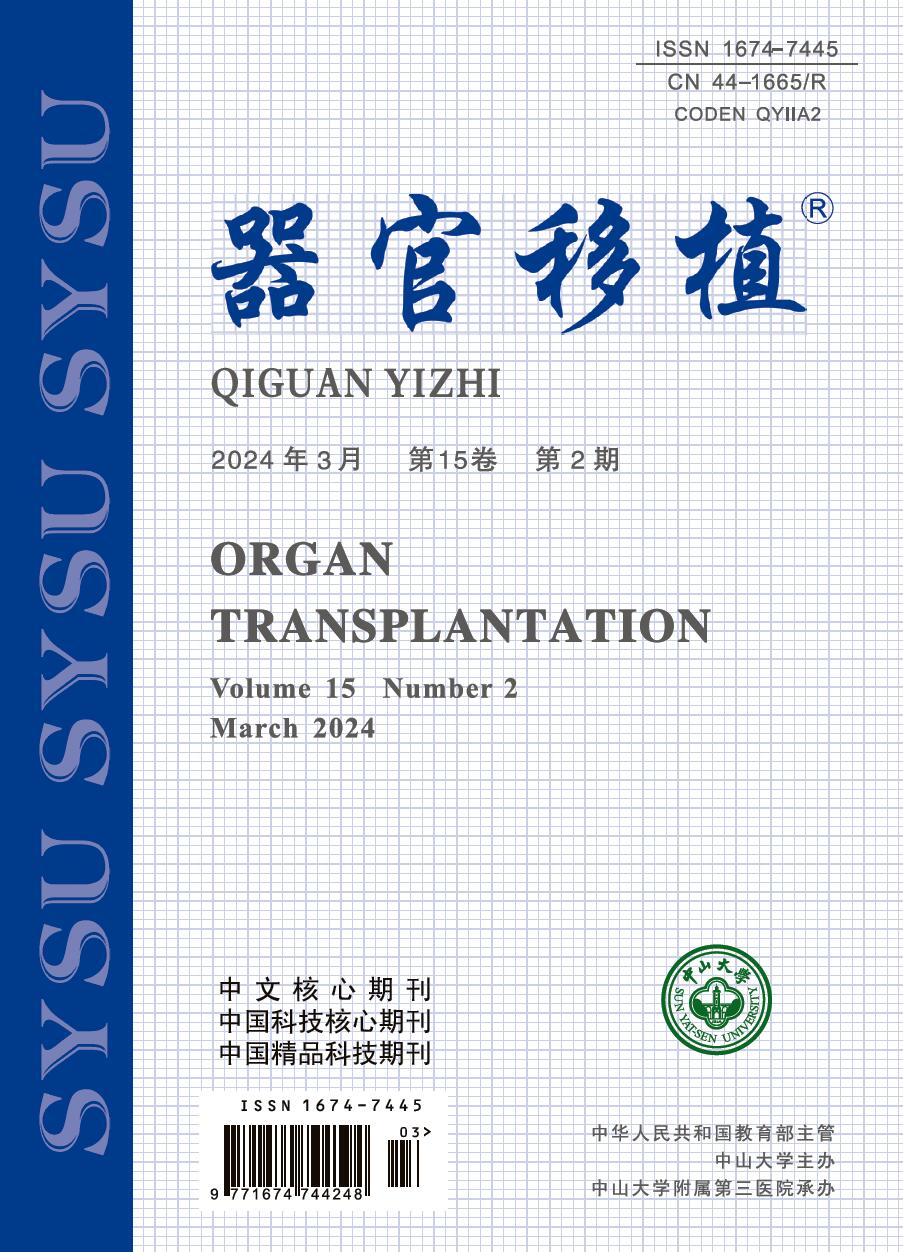Abstract:
Objective To discuss the clinicopathological characteristics and prognosis of the recurrence of IgA nephropathy (IgAN) after renal transplantation. Methods A total of 148 patients, pathologically diagnosed with IgAN which progressed into end-stage renal failure, undergoing renal transplantation in National Clinical Medical Research Center of Kidney Diseases, Nanjing General Hospital of Nanjing Military Command from January 1996 to April 2009, were included in this study.According to whether IgAN recurred, all patients were assigned into recurrence (n=46) and non-recurrence groups (n=102). Urinary red blood cell (U-RBC) count, 24 h urinary protein level, renal function including serum creatinine (Scr) and glomerular filtration rate (GFR) at 0, 1, 2, 3 and 5 years after renal transplantation were statistically compared between two groups. The incidence of histopathological renal injury and survival rate of transplant kidneys was compared between two groups. Results In recurrence group, U-RBC count and 24 h urinary protein level were gradually elevated and renal function steadily declined. Compared with non-recurrence group, U-RBC count at 2-, 3-and 5-year after renal transplantation significantly increased, and renal function was significantly aggravated at postoperative 5 years (all in P < 0.01-0.001) in recurrence group. Renal pathological findings revealed that compared with non-recurrence group, the incidence of cellular crescent formation, glomerulus adhesion, mesangial cell proliferation, increased mesentery matrix, glomerulosclerosis, segmental glomerulosclerosis, glomerular dysfunction and tubulointerstitial fibrosis was significantly higher in recurrence group (all in P < 0.001). After renal transplantation, chronic kidney injury index in recurrence group was 7.7±2.3, which was significantly higher than 4.6±1.4 in non-recurrence group (P < 0.01). Compared with non-recurrence group, the incidence of chronic rejection, glomerulopathy of transplant kidney(without IgAN) and positive C4d deposition was significantly higher in recurrence group (P < 0.01-0.001). At 1-and 3-year after renal transplantation, survival rates of transplant kidney did not significantly differ between recurrence and non-recurrence groups(93.8% vs. 86.7%, 95.6% vs. 88.3%, both in P>0.05). However, the survival rate at 5 years after transplantation was 51.4% in recurrence group, significantly lower compared with 83.8% in non-recurrence group (P < 0.001). In recurrence group, 10 patients (22%) presented with renal failure after renal transplantation, and 9 patients(9%) in non-recurrence group. Conclusions After renal transplantation, the recurrence of IgAN characterized by asymptomatic microscopic hematuria, albuminuria and progressive aggravation of renal function reduce long-term survival rate of renal graft and indicate poor prognosis.








